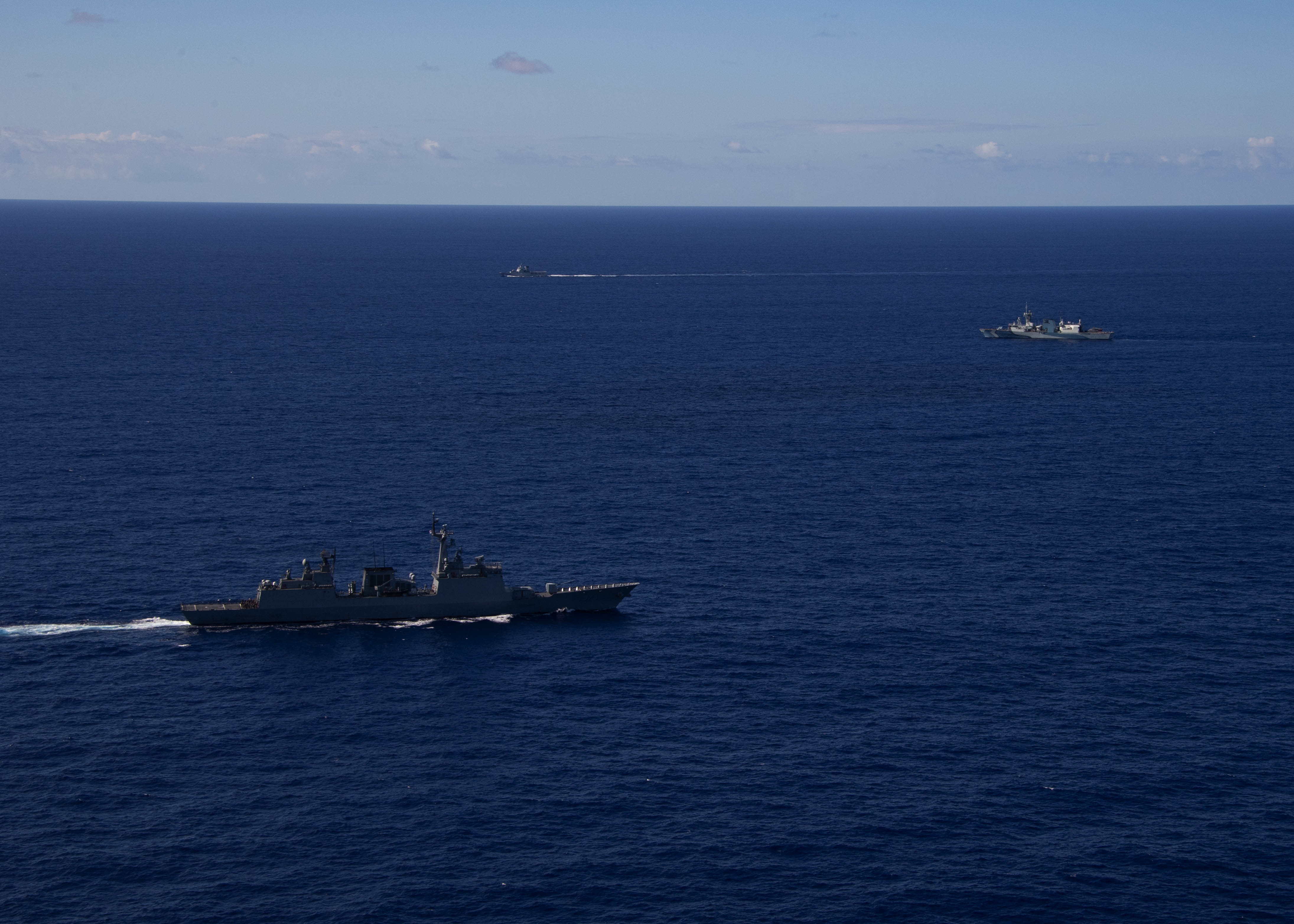
WASHINGTON: The biennial Rim of the Pacific Exercise, which kicked off today in the waters around Hawaii, is in many ways a shell of its 2018 iteration, boasting less than half the nations and ships that normally participate thanks to the COVOID-19 pandemic.
The exercise this year will see 10 countries, about 20 ships and 5,300 personnel work through a series of anti-surface and anti-submarine drills, including a slew of live-fire events.
“Originally, RIMPAC 2020 had planned to include up to 30 countries, more than 50 ships and submarines, more than 200 aircraft, and 25,000 personnel,” making it the largest RIMPAC to date,” 3rd Fleet Commander Vice Adm. Scott Conn said in a recorded video.
South Korea, Canada, Australia, Japan, the Philippines, Singapore, New Zealand, Brunei and France are participating alongside the US for the two-week exercise, which itself has been reduced from the usual month-long series of drills.
In a statement, Pacific Fleet commander, Adm. John Aquilino, put a positive face on the smaller operation: “the growing security environment in the Pacific demands now more than ever that like-minded nations join forces to build trust and collective strength to ensure a continuing free and open Pacific for all nations.”
While the RIMPAC exercise has been drastically scaled down, the fact that it’s happening at all as most militaries have locked down under COVID restrictions signals America’s determination to keep the pressure on China as it keeps pressing its illegal demands in the South China Sea.
China was originally invited to participate in the 2018 edition of the exercise, but that invitation was rescinded at the last minute when the Pentagon objected to China’s deployment of anti-ship missiles, surface-to-air missile systems and electronic jammers in the contested Spratly Islands in the South China Sea.
Since then, American ships have increased their patrols in the South China Sea, and have run Freedom of Navigation Operations between Taiwan and the mainland at a steady clip this year. Overall, the US Navy has had a busy year in the region, signaling to China that the US presence in the region will remain consistent and persistent.
Earlier this week, the guided-missile destroyer USS Mustin teamed up with Japanese destroyer JS Suzutsuki in the East China Sea, while the USS Ronald Reagan carrier strike group steamed back into the South China Sea over the weekend after having run drills with the carrier USS Nimitz in the critical region last month.
The Navy’s drills with its Japanese counterparts have been a staple of those operations throughout the year, including amphibious ship USS America with JS Kunisaki in January, Destroyer Squadron’s 15 ships working with JS Suzunami and Sawagiri in February, USS Gabrielle Giffords with JS Terazuki, JS Kashima and Shimayuki in April and June; and the Reagan Carrier Strike Group with JS Teruzuki in July.
The US continues work to bolster alliances in the region to counter Beijing’s claim to practically all of the 1.3 million square mile South China Sea — putting it at odds with most of its neighbors. It has built runways and placed rocket batteries on several islands claimed by neighboring countries like the Philippines, Vietnam, Malaysia, Indonesia, Brunei, and Taiwan. The US last month called Beijing’s claims “completely unlawful.”
The Chinese Embassy in Washington pushed back against the State Department criticism, calling the US accusations “completely unjustified,” and accusing Washington of “flexing muscles, stirring up tension and inciting confrontation in the region.”
China has also kept up the pressure in the region. In June, the PLA Navy warned ships away from the Paracel Islands as it prepared to conduct military exercises there, making the announcement one day after the US sent two aircraft carriers into the Philippine Sea and regional governments criticized Beijing’s island grab. The Chinese have no legal claim to the area.
The spat comes amidst a wider confrontation that stretches from Chinese tech firm Huawei, and US pressure to warn allies away from the company’s efforts to build 5G networks.